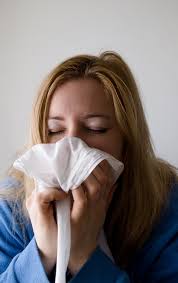
6 Signs Of Poor Quality Indoor Air At Home
The quality of air that circulates in your house matters most when it comes to the health of your home’s occupants. If the home has poor air quality, you will experience increased sniffles, coughs, itches, and sore throats. So, how do you determine whether the air in your home is defective? Here are six signs to look out for.
-
Are there cold and hot spots?
 If you are experiencing cases of cold and hot spots within your home, it is an indication that there is poor circulation in the house. Usually, if your insulation, ventilation system, filters, duct work, or even the HVAC system is not working well, your house will be stuffy and the air stale. This is not the kind of air you want to be breathing.
If you are experiencing cases of cold and hot spots within your home, it is an indication that there is poor circulation in the house. Usually, if your insulation, ventilation system, filters, duct work, or even the HVAC system is not working well, your house will be stuffy and the air stale. This is not the kind of air you want to be breathing.
-
Are you all suddenly getting sick?
Complications ranging from coughing, shortness of breath, headaches, itchy eyes, runny nose, sore throats, and exacerbated allergies can often be a pointer to poor air quality. Are you noticing these complications in your kids, spouse, or even yourself? If yes, it is time to have your duct work and HVAC systems cleaned to allow circulation of fresh and good quality air.
-
Do you have molds?
Molds and fungi grow in areas with poor quality of air and releases bacteria and spores. The combination of fungi, mold, and bacteria has adverse health impacts. Call Air Duct Cleaning Ventura immediately you notice the growth of molds as it is an indication that your house needs fresh air and perhaps the air duct is blocked by pollutants and other harmful contaminants.
-
Does the house stink?
Living in a house for a long time gives you a smell that leaves a homey feeling. Nevertheless, sometimes you may experience a different odor; a not so pleasant smell. This is usually an indication that your house has a circulation problem. If the unpleasant odors are not going away, you need to check the efficiency of your ventilation.
-
How moderate are your humidity levels?
Constant but extreme static electricity, peeling wallpaper, and drying of indoor plants, is an indication of low humidity levels in the house. High humidity is also not good since it can lead to growth of molds, and the thriving of dust mites and related allergens. A house with high quality air will have moderate humidity.
-
What’s with the dust?
Are you experiencing a sudden increase in the amount of dust in your home? If yes, it is an indication that your home has a high concentration of contaminants. The implication is that your filters are not operating properly so these particles and contaminants are in constant circulation within your home; affecting your air quality.
Poor quality indoor air at home can cause diverse health complications. If one or more of these signs are evident in your house, do not hesitate to call a professional air cleaning company. Doing so is the only option you have to ensure there is enough circulation of fresh air in your home.

0